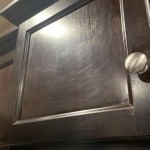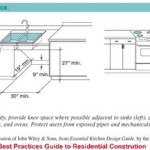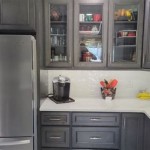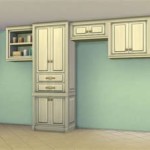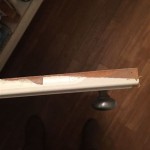Best Kitchen Cabinet Drawer Liners: Protecting and Organizing Your Space
Kitchen cabinet drawer liners are an often-overlooked yet essential component of a well-maintained and organized kitchen. These liners serve multiple purposes, from protecting the interior surfaces of drawers and shelves to preventing items from sliding around and causing damage. The market offers a diverse range of options, each with its own unique benefits and drawbacks. Understanding the different types of liners available and their respective features is crucial for selecting the best option for individual needs and preferences.
The impact of drawer liners extends beyond mere aesthetics. They contribute to the overall cleanliness and hygiene of the kitchen environment. By providing a barrier against spills, crumbs, and other debris, liners prevent these substances from seeping into the wood or other materials used to construct the cabinets. This makes cleaning easier and more effective, reducing the risk of mold, mildew, and unpleasant odors. Furthermore, drawer liners can help to prolong the lifespan of cabinets by shielding them from scratches, dents, and other forms of wear and tear. This is especially important for cabinets made from delicate materials or those with intricate finishes.
Understanding Different Types of Drawer Liners
The selection of drawer liners available encompasses a variety of materials, each offering distinct advantages in terms of durability, ease of cleaning, and aesthetic appeal. Among the most common types are non-adhesive liners, adhesive liners, and shelf liners specifically designed for wire shelving.
Non-Adhesive Liners: These liners are generally made from plastic, rubber, or foam and are designed to stay in place due to their inherent grip. They are typically easy to install and remove, making them a convenient option for those who prefer a less permanent solution. Non-adhesive liners are also often washable, allowing for easy cleaning and maintenance. However, they may not be as effective at preventing items from sliding around as adhesive liners, particularly in drawers that are frequently opened and closed. The grip strength can vary depending on the material and texture of the liner.
Adhesive Liners: As the name suggests, adhesive liners feature a sticky backing that adheres to the surface of the drawer or shelf. This provides a secure and long-lasting hold, preventing the liner from shifting or bunching up. Adhesive liners are particularly useful for preventing items from sliding around, making them a good choice for drawers that contain fragile or delicate items. However, installing adhesive liners can be more challenging than installing non-adhesive liners, as it requires careful alignment and smoothing to avoid wrinkles and bubbles. Removal can also be more difficult and may leave behind a sticky residue that requires cleaning. Choosing a liner with a repositionable adhesive can mitigate some of these issues.
Wire Shelf Liners: For wire shelves, specialized liners are available that are designed to fit snugly between the wires. These liners provide a solid surface that prevents small items from falling through and also make cleaning easier. They are typically made from plastic or vinyl and may be perforated to allow for air circulation. Some wire shelf liners are also treated with antimicrobial agents to inhibit the growth of mold and mildew.
Key Considerations When Choosing Drawer Liners
Selecting the optimal drawer liner involves careful consideration of several factors, including the material, size, ease of cleaning, and aesthetic compatibility with the kitchen's design. Each of these aspects plays a crucial role in ensuring that the chosen liners effectively fulfill their intended purpose and contribute to the overall functionality and appearance of the kitchen.
Material: The material of the drawer liner directly impacts its durability, ease of cleaning, and overall performance. Plastic liners are generally inexpensive and easy to clean, but they may not be as durable as rubber or foam liners. Rubber liners offer excellent grip and cushioning, but they can be more difficult to clean and may have a distinct odor. Foam liners provide good cushioning and are relatively lightweight, but they may be prone to tearing or damage. The choice of material should depend on the specific needs and priorities of the user. For example, a drawer containing heavy pots and pans may benefit from a durable rubber liner, while a drawer containing delicate glassware may be better suited to a cushioned foam liner.
Size and Fit: Accurate measurement of drawer dimensions is critical for ensuring a proper fit. Liners that are too large will need to be trimmed, which can be time-consuming and may result in uneven edges. Liners that are too small will not provide adequate coverage and may shift or slide around. Ideally, the liner should fit snugly within the drawer, covering the entire surface area. Many liners are available in pre-cut sizes or can be easily cut to size using scissors or a utility knife. Some manufacturers also offer custom-cut liners, ensuring a perfect fit for drawers of any size or shape.
Ease of Cleaning: Kitchen drawers are inevitably exposed to spills, crumbs, and other messes. Therefore, it is essential to choose drawer liners that are easy to clean and maintain. Washable liners made from plastic or rubber are generally the easiest to clean, as they can be wiped down with a damp cloth or sponge. Some liners are even dishwasher-safe. Liners with textured surfaces may be more difficult to clean, as debris can become trapped in the crevices. The cleaning frequency will depend on the usage of the drawers and the types of items they contain.
Aesthetic Compatibility: While functionality is paramount, the aesthetic appearance of drawer liners should also be taken into consideration. Liners are available in a wide range of colors, patterns, and textures, allowing users to choose options that complement the overall design of their kitchen. Neutral colors and simple patterns are generally the most versatile, as they blend seamlessly with a variety of decor styles. Some liners also feature decorative elements, such as embossed patterns or metallic accents. Ultimately, the choice of liner should reflect the individual taste and preferences of the user.
Installation and Maintenance Tips
Proper installation and maintenance are essential for maximizing the lifespan and effectiveness of drawer liners. Taking the time to install the liners correctly and following a few simple maintenance tips can help to ensure that they continue to protect and organize kitchen drawers for years to come.
Preparation is Key: Before installing any drawer liner, it is important to thoroughly clean the surfaces of the drawers or shelves. This will remove any dust, dirt, or debris that could prevent the liner from adhering properly. Use a mild detergent and warm water to clean the surfaces, and then dry them completely with a clean cloth. For adhesive liners, it is particularly important to ensure that the surfaces are completely dry, as moisture can interfere with the adhesive bond.
Precise Cutting and Placement: Accurate measurement and cutting are crucial for achieving a seamless and professional-looking installation. Use a ruler or measuring tape to measure the inside dimensions of the drawers or shelves, and then transfer these measurements to the liner. Use a sharp pair of scissors or a utility knife to cut the liner to size, taking care to avoid making any jagged or uneven edges. When placing the liner in the drawer, start at one edge and gradually smooth it out, working towards the opposite edge. This will help to prevent wrinkles and bubbles. For adhesive liners, peel off a small portion of the backing and align the liner with the edge of the drawer, then slowly peel off the remaining backing while smoothing the liner into place.
Regular Cleaning and Care: Regular cleaning is essential for maintaining the cleanliness and hygiene of drawer liners. Wipe down the liners with a damp cloth or sponge on a regular basis to remove any spills, crumbs, or other debris. For more stubborn stains, use a mild detergent and warm water. Avoid using harsh chemicals or abrasive cleaners, as these can damage the liners. If the liners are washable, remove them from the drawers and wash them in the washing machine on a gentle cycle. Tumble dry on low heat or hang them to dry. Replace damaged or worn-out liners as needed to ensure continued protection and organization.
By carefully considering the different types of drawer liners available, taking into account individual needs and preferences, and following proper installation and maintenance procedures, homeowners can effectively protect and organize their kitchen cabinets, creating a more functional and aesthetically pleasing space.

8 Pros And Cons Of Kitchen Cabinet Shelf Liners Everyday Old House

How To Choose The Best Kitchen Shelf Liner 7 Tips Everyday Old House

Simple Diy Drawer And Shelf Liners

Simple Diy Drawer And Shelf Liners

The Best Shelf Liners Of 2024 Kitchen Liner Drawer

The Best Shelf Liners For Protecting Your Cabinets And Drawers

4 Uses For Easyliner Brand Shelf Liner In The Kitchen Duck
:strip_icc()/81Un132ppZL._AC_SX679_-ef9d20e4cd22455e8db3596c0cbd51bf.jpg?strip=all)
The 12 Best Shelf Liners Of 2024

The Best Drawer Liners For Upgraded Organization

10 Reasons Why You Need Shelf Liner Postcards From The Ridge
Related Posts

